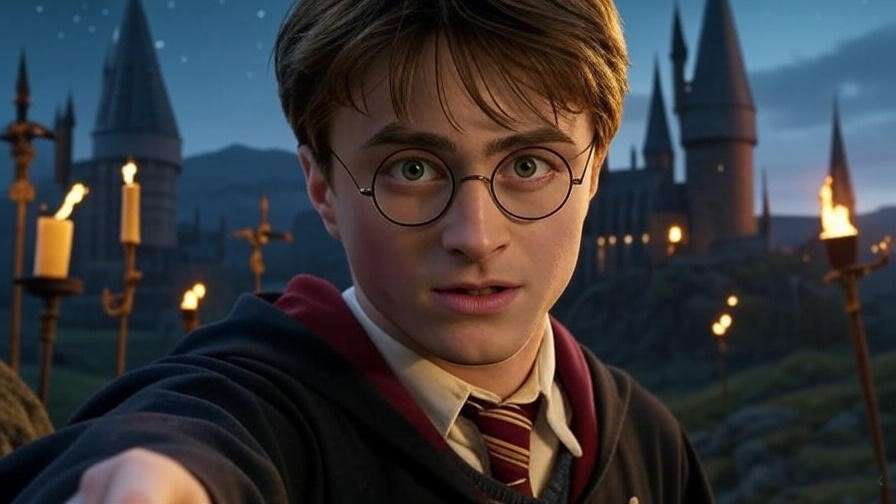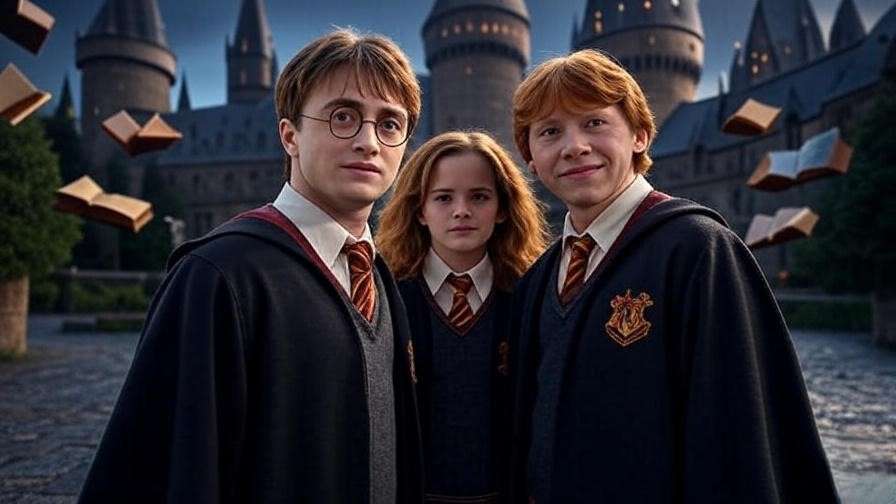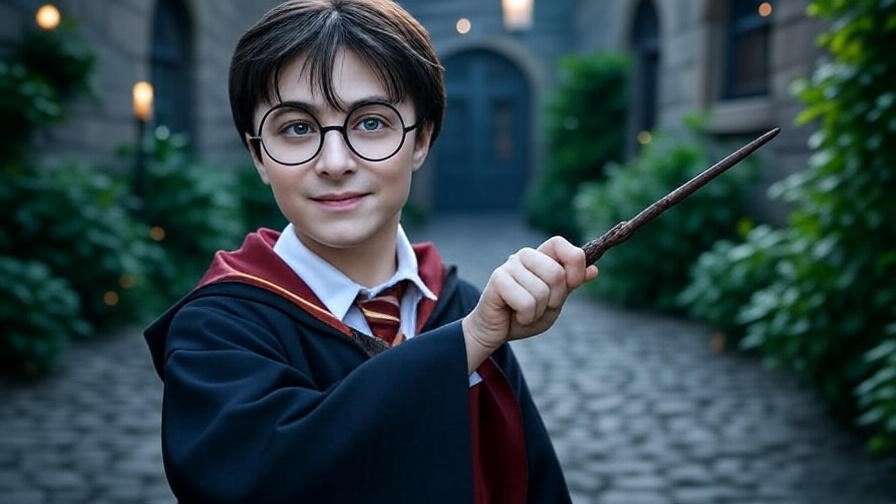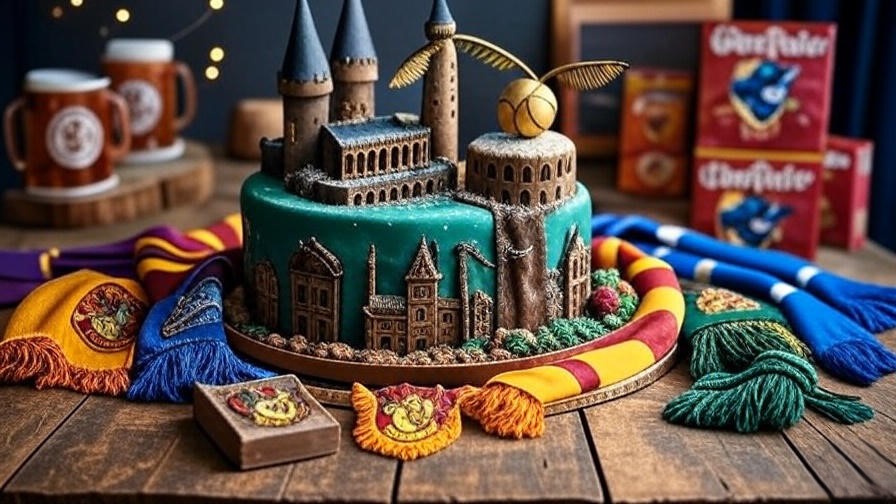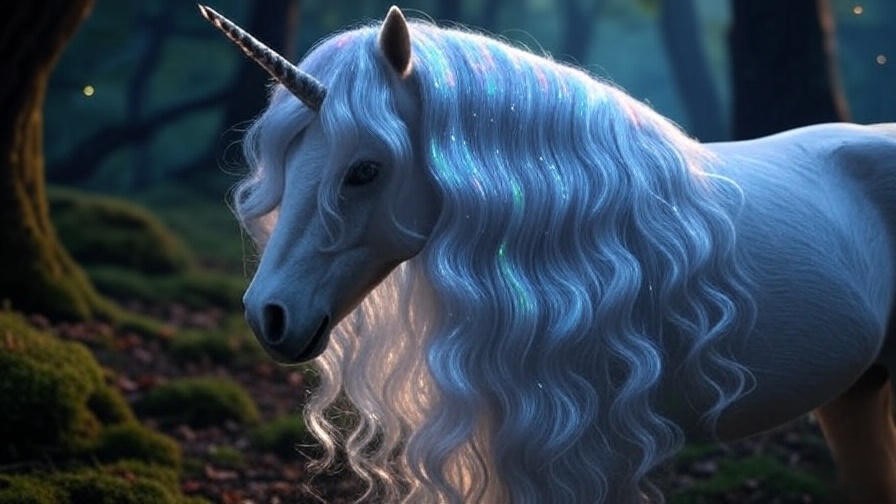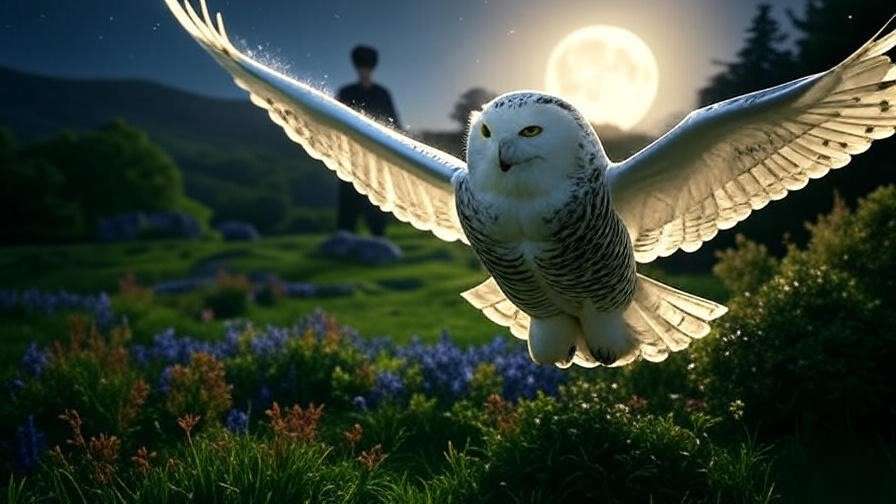Picture this: the Great Hall of Hogwarts, aglow with floating candles, as Harry Potter faces the Mirror of Erised for the first time, glimpsing his heart’s deepest desire. This iconic scene from Harry Potter and the Sorcerer’s Stone captures the magic that has enchanted millions, making the quest to find the best Harry Potter movie a passionate pursuit for fans worldwide. With eight films spanning a decade (2001–2011), grossing over $7.7 billion globally, and sparking endless debates in fan communities, choosing the ultimate Harry Potter movie is no small feat. Each film offers unique strengths—nostalgic charm, groundbreaking visuals, or emotional depth—yet fans often struggle to pinpoint one as the definitive masterpiece. In this comprehensive guide, we dive deep into the wizarding world, combining fan perspectives, critical acclaim, and cinematic achievements to crown the best Harry Potter movie. Backed by insights from IMDb, Rotten Tomatoes, and Potterhead forums, this article promises a magical journey to settle the debate and help you rediscover your favorite film.
The Harry Potter Film Franchise: A Cinematic Legacy
Overview of the Series
The Harry Potter film series, adapted from J.K. Rowling’s beloved novels, is a cultural juggernaut. Launched with Harry Potter and the Sorcerer’s Stone in 2001 and concluding with Harry Potter and the Deathly Hallows: Part 2 in 2011, the eight films brought Hogwarts, Quidditch, and the battle against Voldemort to life. Directed by a talented roster—Chris Columbus, Alfonso Cuarón, Mike Newell, and David Yates—the series evolved from whimsical children’s adventures to dark, mature epics. With a stellar cast including Daniel Radcliffe, Emma Watson, and Rupert Grint, alongside legends like Alan Rickman and Maggie Smith, the films earned critical praise, multiple Academy Award nominations, and a permanent place in pop culture. Their influence extends beyond the screen, inspiring theme parks, merchandise, and a global fanbase that thrives on platforms like Reddit and X.
Why Choosing the “Best” Movie Matters
For Potterheads, selecting the best Harry Potter movie is more than a casual debate—it’s a deeply personal choice tied to nostalgia, emotional resonance, and cinematic appreciation. Newcomers seek the perfect entry point to the series, while longtime fans revisit favorites for comfort or to relive iconic moments like Harry’s first flight on a broomstick or Dumbledore’s tragic farewell. The question taps into a universal need: to identify the film that best captures the magic of Rowling’s world. Whether you’re planning a movie marathon or introducing a friend to Hogwarts, knowing the standout film enhances the experience, making this exploration both practical and meaningful.
Criteria for Determining the Best Harry Potter Movie
Storytelling and Character Development
A great Harry Potter movie balances fidelity to Rowling’s books with compelling storytelling. The best films weave rich narratives, develop complex characters, and deliver emotional payoff. For example, Harry Potter and the Prisoner of Azkaban introduces mature themes like loss and identity through Sirius Black’s arc, while Harry Potter and the Deathly Hallows: Part 2 ties up the series’ emotional threads with Harry’s final stand. We’ll evaluate how each film handles key moments, character growth, and adaptation choices to resonate with audiences.
Cinematic Craftsmanship
Direction, cinematography, music, and visual effects are critical to a film’s impact. Chris Columbus brought warmth to the early films, while Alfonso Cuarón’s Prisoner of Azkaban introduced a darker, more artistic tone with innovative camera work. John Williams’ iconic score defined the series’ early magic, while later composers like Alexandre Desplat added gravitas. Special effects, from the Quidditch matches to the Battle of Hogwarts, also play a role. We’ll assess how each film’s technical achievements elevate its storytelling.
Fan Reception and Cultural Impact
Fan opinions, gathered from platforms like Reddit, X, and Potterhead forums, provide insight into which films resonate most. Prisoner of Azkaban often tops fan polls for its bold direction, while Deathly Hallows: Part 2 is celebrated for its epic finale. We’ll incorporate fan sentiments alongside metrics like IMDb ratings (e.g., Prisoner of Azkaban at 7.8/10) and Rotten Tomatoes scores to gauge popularity and lasting impact.
Box Office and Critical Success
Commercial success and critical acclaim offer objective measures of quality. Deathly Hallows: Part 2 leads with $1.34 billion in global box office revenue, while Prisoner of Azkaban earned praise for its artistic risks. Awards, such as Half-Blood Prince’s Oscar nomination for Best Cinematography, also factor in. We’ll use these data points to complement fan and critical perspectives.
Breaking Down the Contenders: A Movie-by-Movie Analysis
Harry Potter and the Sorcerer’s Stone (2001)
Strengths: Directed by Chris Columbus, Sorcerer’s Stone introduces the wizarding world with childlike wonder. John Williams’ score, iconic sets like the Great Hall, and the trio’s casting (Radcliffe, Watson, Grint) create a nostalgic foundation. It faithfully adapts Rowling’s first book, capturing Harry’s discovery of his magical destiny.

Weaknesses: Early 2000s visual effects feel dated compared to later films, and the storytelling is simpler, aimed at younger audiences.
Fan Appeal: Beloved for its innocence and iconic moments like Harry’s first Hogwarts letter or the Mirror of Erised scene. It’s a frequent choice for nostalgic rewatches.
Harry Potter and the Chamber of Secrets (2002)
Strengths: Also directed by Columbus, Chamber of Secrets expands Hogwarts’ lore with the Chamber itself and introduces key characters like Dobby. The Basilisk battle is a thrilling highlight, and the young cast’s chemistry shines.
Weaknesses: Its 161-minute runtime feels bloated, and the direction lacks the flair of later films.
Fan Appeal: Fans cherish moments like the flying car and Tom Riddle’s reveal, though it’s less frequently cited as the top film.
Harry Potter and the Prisoner of Azkaban (2004)
Strengths: Alfonso Cuarón’s direction marks a turning point, blending darker themes with stunning visuals. The time-travel plot, via the Time-Turner, is expertly crafted, and Gary Oldman’s Sirius Black adds emotional depth. The film’s cinematography, with sweeping shots of Hogwarts’ grounds, is widely praised.

Weaknesses: Some book fans criticize omitted details (e.g., Marauders’ backstories), and its tonal shift alienated younger viewers.
Fan Appeal: Frequently tops fan polls for its bold storytelling and artistic leap, often called the series’ creative peak.
Harry Potter and the Goblet of Fire (2005)
Strengths: Mike Newell’s direction brings high-stakes action through the Triwizard Tournament. The film introduces darker elements (Voldemort’s return) and memorable scenes like the Yule Ball. Ralph Fiennes’ chilling Voldemort debut is a standout.

Weaknesses: The dense source material leads to rushed pacing and omitted subplots, frustrating book purists.
Fan Appeal: Loved for its action-packed sequences and coming-of-age moments, it’s a fan favorite for its spectacle.
Harry Potter and the Order of the Phoenix (2007)
Strengths: Directed by David Yates, Order of the Phoenix captures Harry’s emotional turmoil as he faces isolation and doubt. The formation of Dumbledore’s Army is a powerful highlight, showcasing the trio’s growth and defiance against Umbridge’s tyranny. Imelda Staunton’s chilling portrayal of Dolores Umbridge adds a memorable antagonist.
Weaknesses: Significant book cuts, such as details about the Order, disappointed some fans. Its shorter runtime (138 minutes) feels rushed compared to the book’s depth.
Fan Appeal: Fans resonate with its rebellious tone and themes of standing up to injustice, making it a favorite for those who value character-driven storytelling.
Harry Potter and the Half-Blood Prince (2009)
Strengths: Also directed by Yates, Half-Blood Prince excels in cinematography, earning an Oscar nomination for its moody, golden-hued visuals. The film dives into Voldemort’s past through Tom Riddle’s memories and delivers emotional weight with Dumbledore’s death. The growing romance between Ron and Hermione adds charm.

Weaknesses: Its slower pace and focus on character over action frustrated some viewers expecting more plot progression.
Fan Appeal: Praised for its emotional depth and visual beauty, it’s a top pick for fans who appreciate quieter, character-focused moments.
Harry Potter and the Deathly Hallows: Part 1 (2010)
Strengths: Yates’ direction creates an intimate, gritty tone as Harry, Ron, and Hermione hunt Horcruxes on the run. The film’s focus on the trio’s friendship and struggles, paired with stunning visuals like the Lovegood house scene, delivers raw emotion.

Weaknesses: The slower pace and lack of a traditional climax (due to the split narrative) left some fans wanting more action.
Fan Appeal: Loved for its character depth and survivalist vibe, it resonates with fans who enjoy the trio’s bond and darker themes.
Harry Potter and the Deathly Hallows: Part 2 (2011)
Strengths: The series’ epic finale, directed by Yates, delivers a thrilling conclusion with the Battle of Hogwarts. Stunning visual effects, powerful performances (especially Alan Rickman’s Snape), and a satisfying resolution make it a cinematic triumph. It’s the highest-grossing film in the series at $1.34 billion.

Weaknesses: Some scenes feel rushed due to the dense plot, and certain book details (e.g., secondary character arcs) are glossed over.
Fan Appeal: Celebrated as the grand culmination of the series, it’s a fan favorite for its action, emotional payoff, and iconic moments like Snape’s “Always” reveal.
Fan and Critic Perspectives: What Makes a Movie Stand Out?
Insights from Fan Communities
Fan discussions on platforms like Reddit, X, and Potterhead forums reveal diverse preferences. Prisoner of Azkaban often leads polls for its bold direction and time-travel plot, with fans praising Cuarón’s vision: “It feels like the moment the series grew up,” one Reddit user noted. Deathly Hallows: Part 2 follows closely for its epic climax, with X posts calling it “the perfect ending to a decade of magic.” Meanwhile, Sorcerer’s Stone holds a special place for its nostalgic charm, especially among fans who grew up with the series. These insights, gathered from active fan communities, reflect the emotional and cultural weight of each film.
Critical Acclaim and Awards
Critics have lauded various films for different reasons. Prisoner of Azkaban earned a 90% Rotten Tomatoes score and praise from Roger Ebert for its “visual confidence.” Half-Blood Prince scored an 84% and an Oscar nod for cinematography, with critics noting its “haunting beauty.” Deathly Hallows: Part 2 also hit 96% on Rotten Tomatoes and earned three Oscar nominations, cementing its critical success. Awards and reviews from reputable sources like Metacritic and the Academy provide an objective lens for our evaluation.
Memorable Moments That Define the Series
Certain scenes transcend the films, becoming cultural touchstones. The “Always” reveal in Deathly Hallows: Part 2 showcases Snape’s tragic love, resonating across generations. Harry’s Patronus in Prisoner of Azkaban, conjuring a stag against Dementors, symbolizes hope and strength. The Yule Ball in Goblet of Fire captures awkward teenage romance, while the Basilisk battle in Chamber of Secrets thrills with its intensity. These moments, etched in fans’ memories, elevate a film’s status in the quest for the best.
Crowning the Best Harry Potter Movie
The Verdict
After weighing storytelling, cinematic craftsmanship, fan reception, and critical success, Harry Potter and the Prisoner of Azkaban emerges as the best Harry Potter movie. Directed by Alfonso Cuarón, it strikes a perfect balance between artistic innovation, emotional depth, and fidelity to Rowling’s world. Its 90% Rotten Tomatoes score, 7.8/10 IMDb rating, and frequent top ranking in fan polls underscore its excellence.
Why This Movie Resonates
Prisoner of Azkaban stands out for its bold shift to a darker, more mature tone, introducing complex characters like Sirius Black and Remus Lupin. Cuarón’s direction, with sweeping cinematography and innovative techniques (e.g., the freeze-frame transitions), elevates the film’s visual storytelling. The time-travel plot is seamlessly executed, adding intrigue without confusion. Fans and critics alike praise its ability to appeal to both young viewers and adults, making it a versatile masterpiece. As one X user put it, “It’s the film that made Hogwarts feel alive.”
Honorable Mentions
Deathly Hallows: Part 2 deserves recognition for its epic finale and emotional closure, perfect for fans craving action and resolution. Half-Blood Prince shines for its visual artistry and character depth, appealing to those who value quieter moments. Sorcerer’s Stone remains a nostalgic gem, ideal for introducing new fans to the series.
Expert Tips for Enjoying the Best Harry Potter Movie
- Tip 1: Focus on Cinematography: Rewatch Prisoner of Azkaban with an eye for Cuarón’s visual choices, like the Hogwarts clock tower shots or the Dementors’ eerie design, to appreciate its artistry.
- Tip 2: Pair with the Book: Read Prisoner of Azkaban alongside the film to spot differences, like the Marauders’ backstory, which deepens the experience.
- Tip 3: Host a Themed Watch Party: Create a Hogwarts ambiance with themed snacks (e.g., chocolate frogs, butterbeer) and trivia about Sirius Black or time-travel to engage friends.
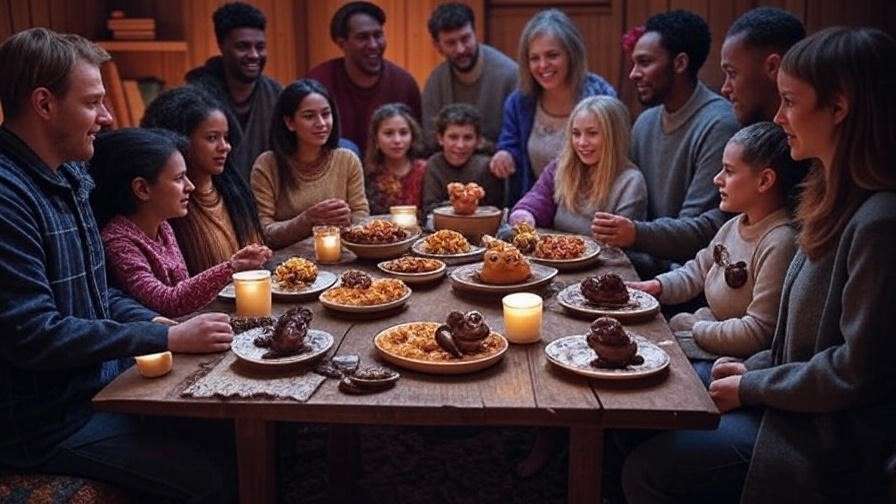
Example: As a lifelong Potterhead, I rewatched Prisoner of Azkaban recently and noticed new details, like the subtle foreshadowing of Sirius’ loyalty in his first scene. It reminded me why this film feels so timeless.
FAQs About the Best Harry Potter Movie
- Which Harry Potter movie is best for newcomers?
Sorcerer’s Stone is ideal for its accessible introduction to the wizarding world, while Prisoner of Azkaban works as a standalone story with richer storytelling. - Why do fans debate the best Harry Potter movie?
Fans have varied preferences based on nostalgia (e.g., Sorcerer’s Stone), cinematic innovation (Prisoner of Azkaban), or epic finales (Deathly Hallows: Part 2), making debates deeply personal. - Which movie is closest to the books?
Chamber of Secrets stays closest to its source material, while Prisoner of Azkaban captures the book’s spirit despite some omissions. - Which Harry Potter movie has the best visuals?
Half-Blood Prince excels in cinematography, with its moody palette, while Deathly Hallows: Part 2 shines for its stunning battle sequences.
The Harry Potter film series is a magical tapestry, weaving nostalgia, adventure, and cinematic brilliance. After exploring each film’s storytelling, craftsmanship, and fan impact, Harry Potter and the Prisoner of Azkaban stands tall as the best Harry Potter movie, blending artistry, emotion, and timeless appeal. Whether you agree or champion another film, the wizarding world invites endless exploration. Rewatch Prisoner of Azkaban, share your favorite in the comments, or join the debate on X. For more Harry Potter insights, check out our posts on character analyses and book-vs-movie comparisons. Let’s keep the magic alive!

